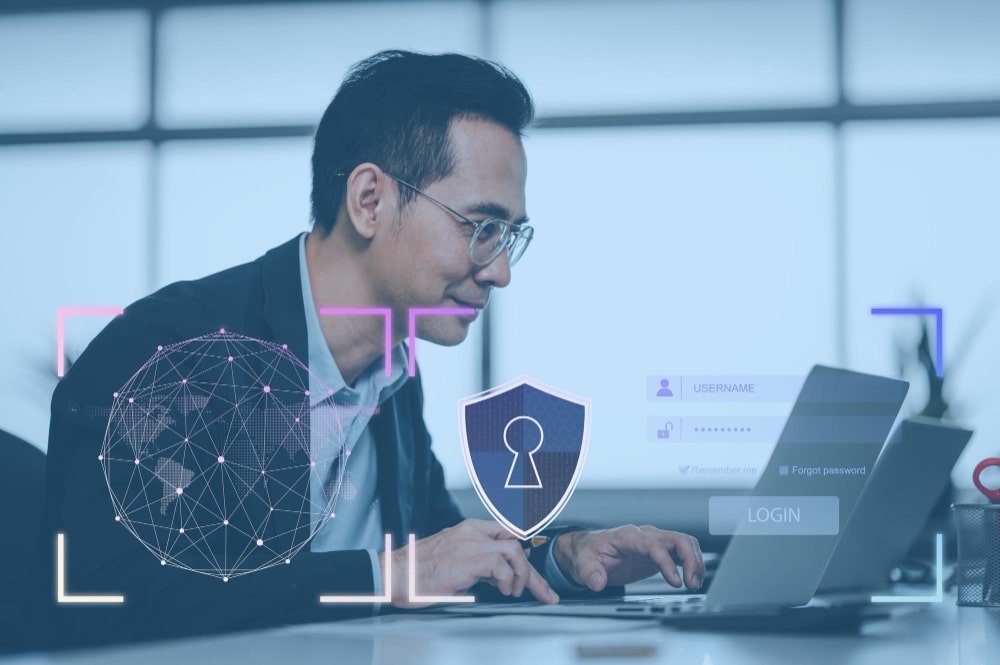In today’s digital world, where our personal and professional lives are increasingly intertwined with technology, cybersecurity has become critical. With the constant evolution of cyber attacks and the growing sophistication of cybercriminals, organisations and individuals must be prepared with robust cybersecurity frameworks to protect their sensitive information and digital assets.
This blog has listed the most critical cybersecurity frameworks developed to guide organisations and governments in safeguarding their important data from cyber threats.
What is a Cyber Security Framework (CSF)?
The cyber security framework is a set of rules, best practices, and procedures used by organisations to manage and reduce security risks. The cybersecurity framework encompasses all areas of an organisation’s operations, from the boardroom to the data centre. They are intended to assist businesses in better understanding and managing their cybersecurity posture, making informed security investment decisions, and defending against potential threats and vulnerabilities.
What are the types of cyber security frameworks?
Based on the functions, there are usually three types of cybersecurity frameworks. They are listed below:
1. Control frameworks
This framework is a set of controls for protecting data within an organisation’s or other entity’s IT infrastructure. This framework functions as a comprehensive cybersecurity procedure, protecting against fraud or theft from a wide range of third parties, including hackers and other types of cybercriminals. It also helps to:
- Develop a basic security strategy and road map for the cyber security department of the organisation.
- Provides a baseline set of security controls.
- Assess current capabilities of the infrastructure and technology.
- Prioritises security control implementation.
Examples: Critical Security Controls
2. Program frameworks
The primary purpose of the program frameworks is to show a more advanced level of the organisation’s security efforts. As the program grows, this approach helps business leaders gain a better knowledge of the overall security posture. This framework helps to:
- Assess the state of the current program of security.
- Build a complete cyber security program.
- Measures the program’s security and compares it against the standards of the industry.
- Simplifies the communications between leaders of the business.
Examples: ISO/IEC 27001, NIST CSF
3. Risk management frameworks
A mature security program will usually incorporate appropriate risk frameworks. These focus on the controls required to assess, analyse, and appropriately prioritise the organisation’s actions against ongoing security concerns. This framework helps to:
- Defines necessary steps for risk assessment management
- Structure a cybersecurity risk management program
- Identify, measure and quantify security threats.
- Prioritise appropriate security activities and processes.
Examples: SOC2
Top 12 cybersecurity frameworks
All security standards and regulations improve security and risk management while aligning with the industry’s regulatory standards. The following are the top cybersecurity frameworks that you should know:
NIST cybersecurity framework
The National Institute of Standards and Technology (NIST) is a government agency responsible for promoting technology and security standards in the United States. This cybersecurity framework outlines how an organisation may identify, detect, protect, respond to, and recover from cyber-attacks. This framework was developed in 2014 to provide direction to federal agencies, although the concepts apply to almost any organisation attempting to secure critical infrastructure.
Now in its second version, the NIST 2.0 cybersecurity framework provides a comprehensive set of best practices for businesses aiming to build up their security posture. It provides complete details on risk management, asset management, identification and access control, incident response planning, supply chain management, and many more.
ISO/IEC 27001
The ISO/IEC 27001 standard tends to be the most globally known information security management systems (ISMS) standard, with its focus on people, policy, and technology. ISO/IEC 27001 specifies the standards for creating, implementing, maintaining, and upgrading an organisation’s ISMS. This standard will likely be introduced in enterprises of all sizes and sectors, as it provides guidelines for managing cyber risk associated with data security. ISO/IEC 27001 is important because of its ability to improve risk awareness, allowing organisations to proactively detect and address vulnerabilities in their information security, especially in the face of increasing cyber threats.
CIS controls
The Centre for Internet Security (CIS) maintains a collection of 18 best practices for cyber security standards, which are designed to safeguard organisations’ systems from regular cyberattacks. The controls are divided into three categories:
- Basic controls: This section focuses on the critical cybersecurity measures that all businesses need to implement, such as regular patching and antivirus protection.
- Foundational controls: These controls include advanced techniques such as two-factor authentication and regular log file monitoring to supplement basic security policies.
- Organisational controls: These controls are intended to give additional protections tailored to the needs of an organisation’s environment, such as user training and awareness.
SOC2
The American Institute of Certified Public Accountants (AICPA) developed Service Organisation Control (SOC) Type 2 as a trust-based security framework and auditing standard. It assists in verifying that vendors and partners are securely managing client data.
The SOC2 framework is intended for cloud service providers and SaaS companies that store and process client data in the cloud. This standard is based on five trust service principles: security, availability, processing integrity, confidentiality, and privacy.
This framework consists of over 60 compliance standards and rigorous auditing methods for third-party systems and controls. Auditing can take longer than a year to complete. At the end of the procedure, a report is produced confirming the vendor’s cybersecurity posture.
SOC2 is a complex and demanding framework for implementation. Organisations in the finance and banking sectors may have a particularly difficult time implementing this framework since they must meet a higher degree of compliance than other sectors. Nonetheless, this framework is critical since it is the primary instrument in third-party risk management programs.
CCM
This cloud control matrix (CCM) acts as a cybersecurity control structure designed specifically for cloud computing. This framework was created by the Cloud Security Alliance (CCA), a non-profit organisation dedicated to promoting best practices in cloud computing security.
The CCM encompasses the fundamental components of cloud technology across 17 domains, which branch out into 197 control objectives, including the entire cloud technology spectrum. This approach is useful for conducting scientific evaluations of cloud implementations and guiding the allocation of security controls across various cloud supply chain stakeholders.
COBIT
COBIT (Control Objectives for Information and Related Technology) is a comprehensive collection of guidelines created by the Information Systems Audit and Control Association (ISACA). COBIT provides five criteria for an effective governance system that is applicable across businesses and industries. These include:
- Meeting the needs of stakeholders.
- Covering the enterprise end-to-end.
- Applying a single integrated framework.
- Enabling an approach of holistic
- Separating governance from management.
COBIT also includes 40 governance and business management objectives, which IT professionals can prioritise or ignore based on stakeholder needs. These objectives are grouped into categories that correspond to business operations such as planning, creation, and monitoring.
PCI DSS
The Payment Card Industry Data Security Standard (PCI DSS) is a global security standard that helps organisations handle credit card information from major card issues. Card brands must comply with this cybersecurity standard overseen by the Payment Card Industry Security Standards Council (PCI SSC). Its goal is to better manage cardholder data and reduce credit card fraud. Compliance with this standard is assessed on an annual or quarterly basis.
PCI DSS version 3.2.1 has 12 primary requirements and more than 300 sub-requirements including network security, data protection, vulnerability management, and information security policy. The rules are modified every three years, with interim changes made during the year.
CISA
The Cyber Security and Infrastructure Security Agency (CISA) of the Department of Homeland Security (DHS) defends the Internet’s infrastructure against threats such as natural disasters, terrorist acts, and cyberwarfare.
CISA regularly identifies and assesses cyber risks to Internet infrastructure, cooperating with both the government and the corporate sector. It offers a variety of resources, such as threat analysis, cyber security tools, and incident response across all .gov domains. CISA also provides technical coordination tools throughout the country to help partners communicate during an emergency.
HITRUST
The Health Information Trust Alliance (HITRUST) is a healthcare industry-governed organisation that created the Common Security Framework (CSF), a certifiable framework that provides healthcare organisations with an efficient method for managing regulatory compliance and frameworks, as well as risk mitigation.
Expanding on the HIPAA and HITECH Acts, the CSF is a standardised compliance framework, assessment, and certification process that includes healthcare-specific security, privacy, and other legal requirements from earlier frameworks such as PCI-DSS, ISO/IEC 27001, and MARS-E. Microsoft Azure and Office 365 are the first hyper-scale cloud services to receive the HITRUST CSF certification. Microsoft endorses the HITRUST Shared Responsibility Program.
Katakri
Katakri is an auditing instrument developed by Finland’s National Security Authority that is used by authorities to assess an organisation’s ability to successfully protect classified information. The primary goal of Katakri is to guarantee that proper security measures are in place to avoid the leakage of classified information in all contexts. Specifically, facility security clearance granted by katakri can be used for both domestic and international enterprises. It comprises basic requirements based on national legislation and international responsibilities. However, katakri avoids establishing absolute information security rules, instead relying on existing legislation and international responsibilities.
SOGP
The Information Security Forum (ISF) developed the Standard of Good Practice for Information Security (SOGP), which provides practical and accurate recommendations on business-related information security topics. The SOGP primarily targets Chief Information Security Officers (CISOs), information security managers, business managers, IT managers, internal and external auditors, and IT service providers from various organisational sizes.
SOGP assists businesses in implementing current best practices into their business operations, information security policies and programs, as well as risk management and compliance frameworks.
SCF
The Secure Controls Framework (SCF) is a comprehensive set of controls for developing, implementing, and maintaining secure processes, applications, and systems. This meta-framework covers difficulties in people, processes, technology, and data, with over 1000 controls that comply with numerous regulations and standards. The framework is divided into 32 sections that address statutory, regulatory, and contractual cybersecurity and privacy regulations.
It acts as a long-term tool for adopting and upholding security and privacy principles. SCF assists businesses in implementing a comprehensive strategy to ensure the confidentiality, integrity, availability, and safety (CIAS) of their systems and data.
Conclusion
In the ever-evolving landscape of cybersecurity, staying informed about the latest frameworks and best practices is crucial for protecting your organisation’s digital assets. The 12 cybersecurity frameworks covered in this blog provide a comprehensive approach to safeguarding your systems and data from a wide range of threats. By implementing these frameworks, organisations can effectively address vulnerabilities, enhance detection and response capabilities, and maintain compliance with regulatory requirements.
Adopting these cybersecurity frameworks is not just a matter of compliance; it’s an investment in your organisation’s resilience and ability to thrive in the face of evolving cyber threats.










